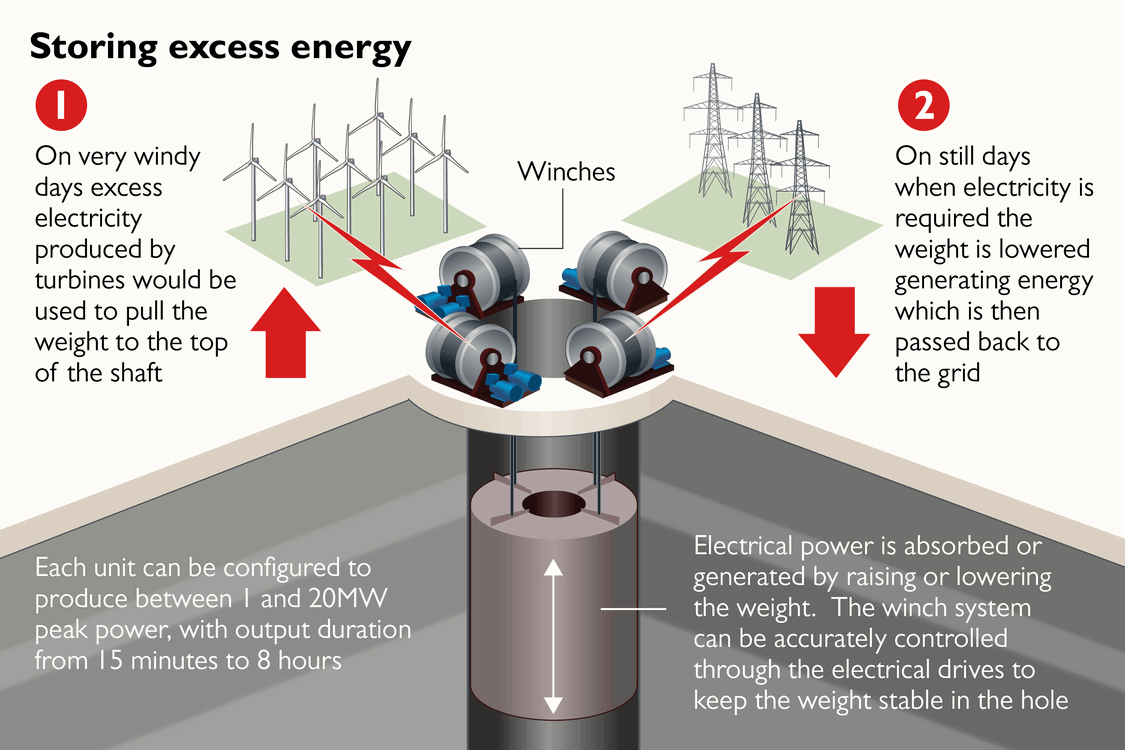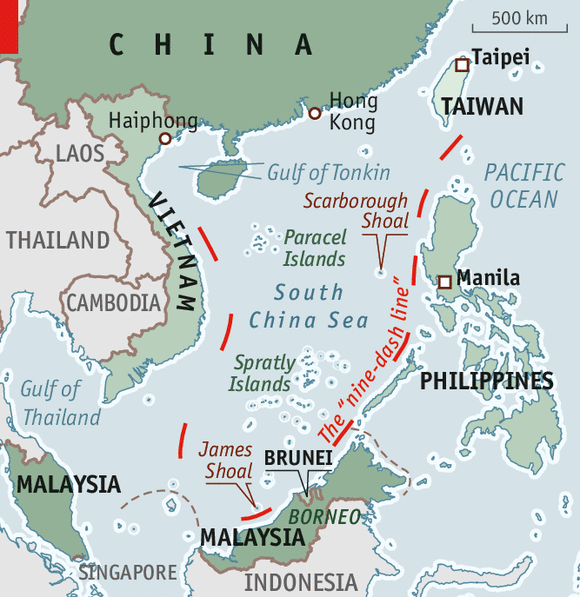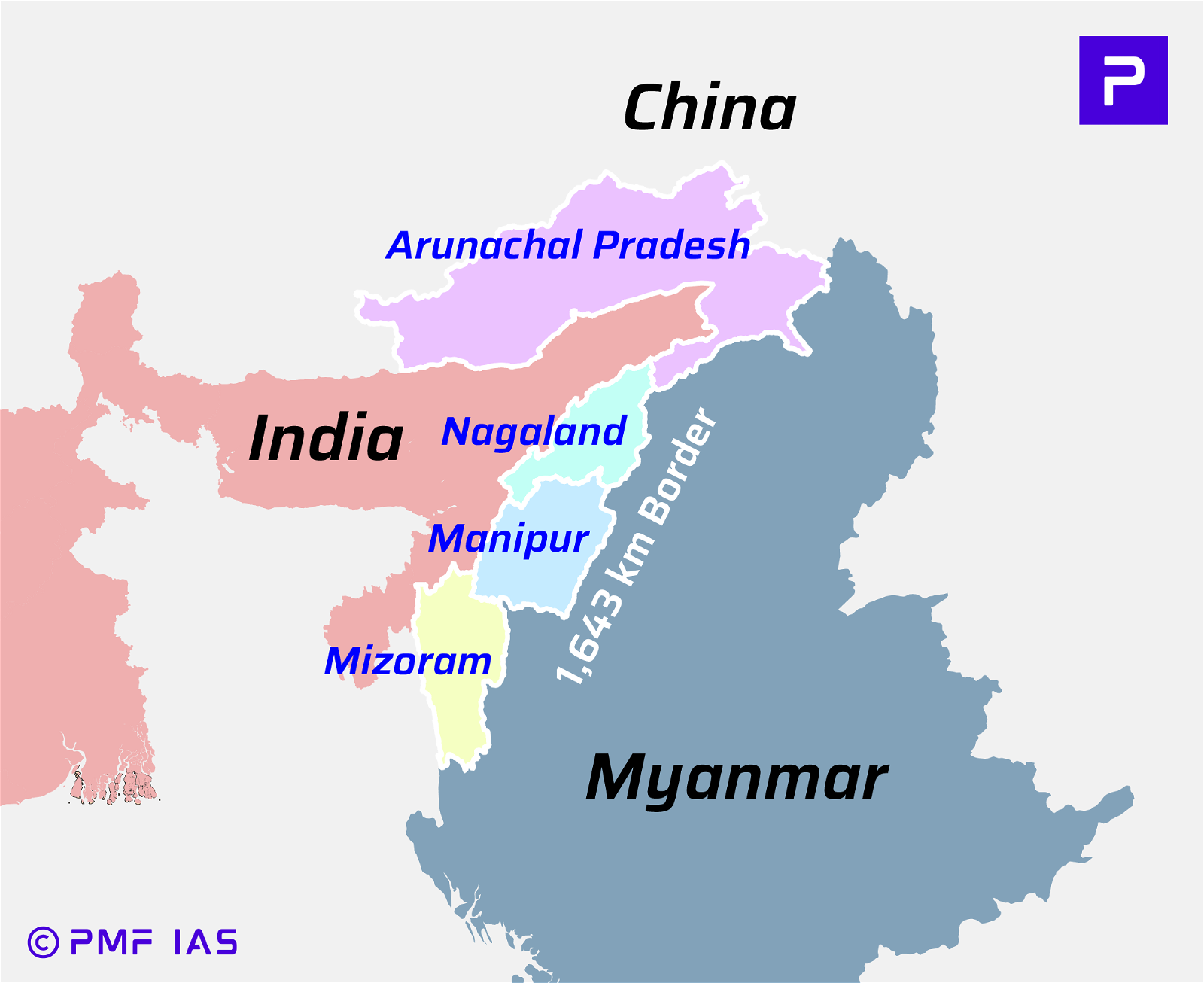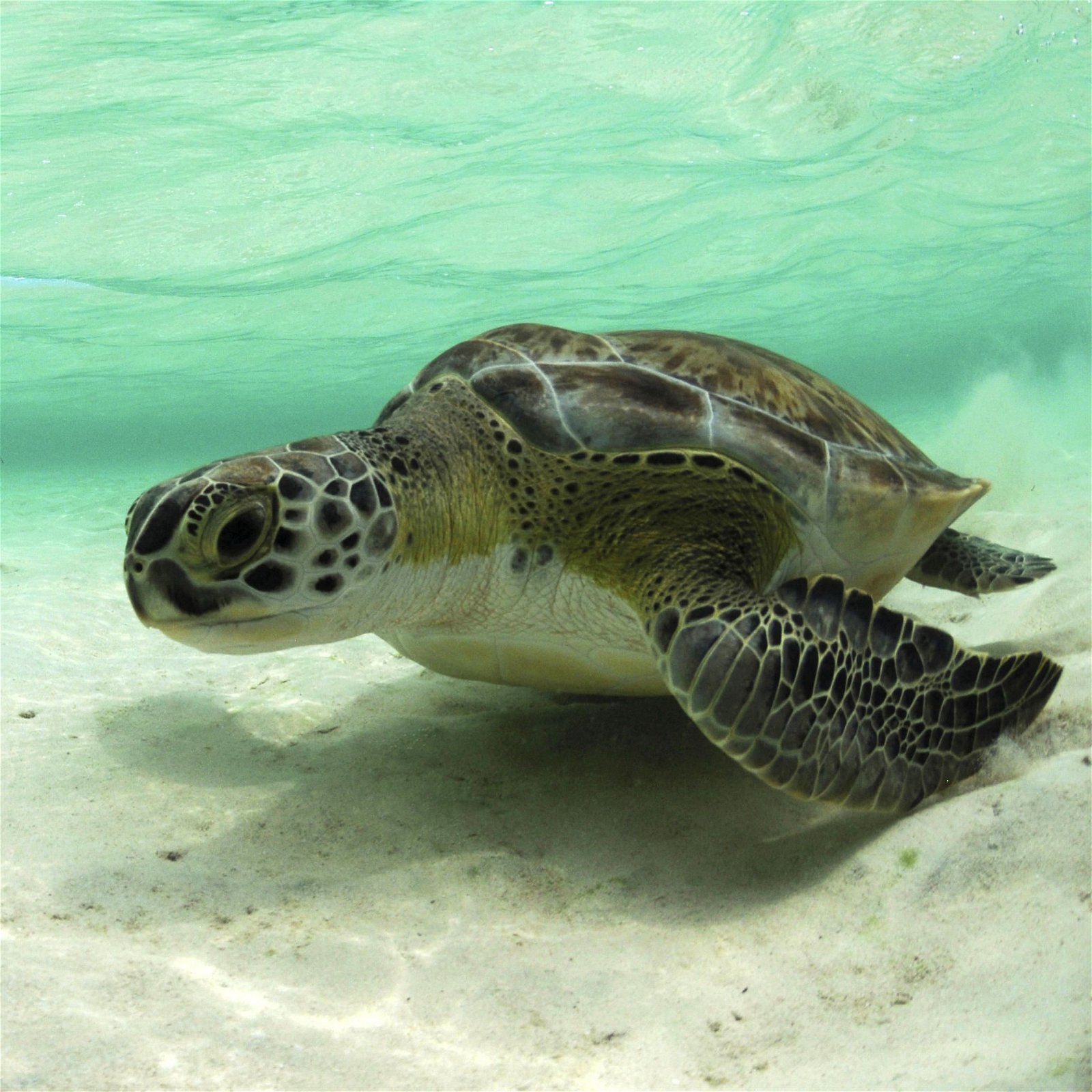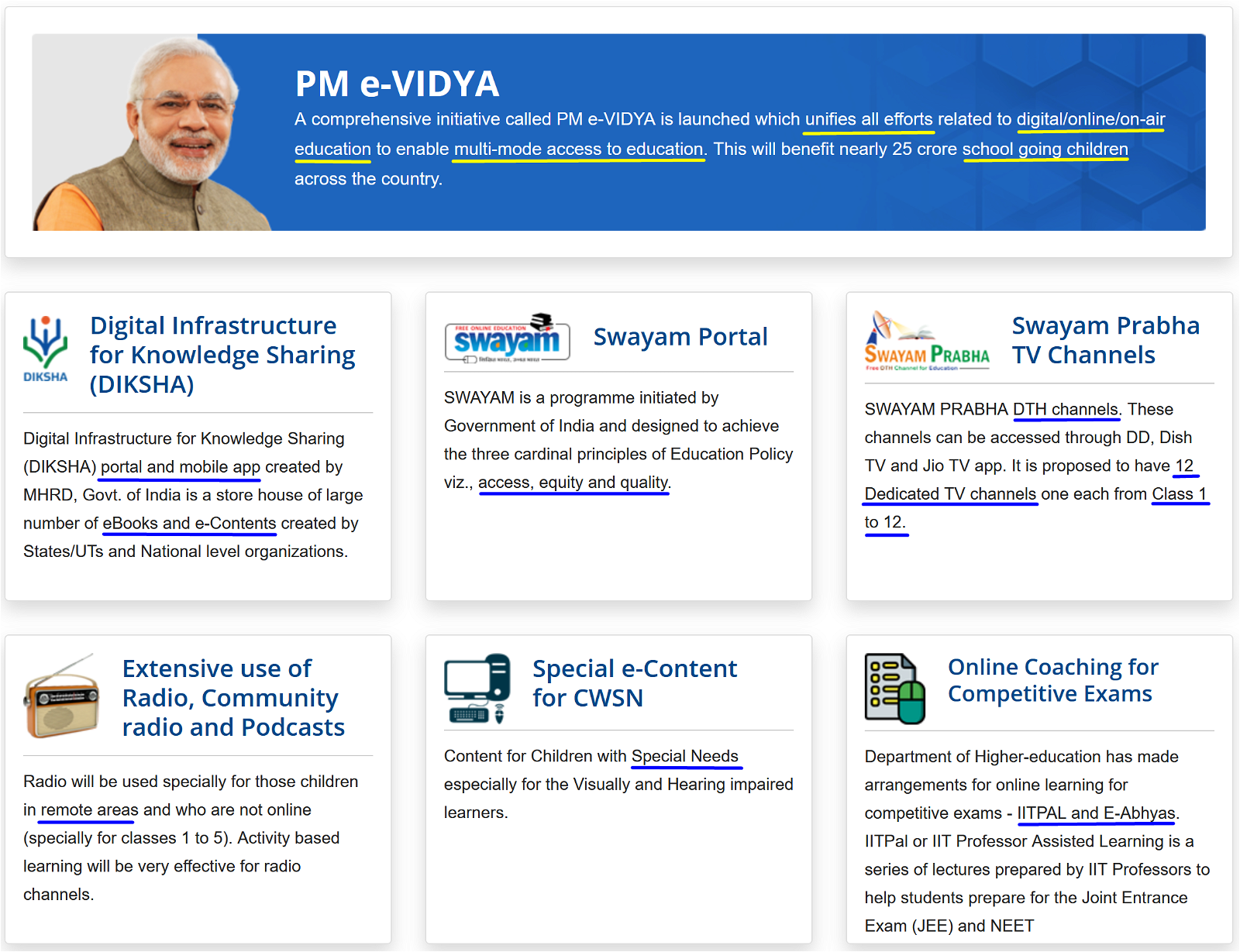
Current Affairs for UPSC Civil Services Exam – March 13, 2024
Subscribers of "Current Affairs" course can Download Daily Current Affairs in PDF/DOC
Subscribe to Never Miss an Important Update! Assured Discounts on New Products!
Must Join PMF IAS Telegram Channel & PMF IAS History Telegram Channel
{GS1 – A&C – Architecture} Bhojshala Complex
- Context(TH I TOI): The MP HC has directed the Archaeological Survey of India (ASI) to conduct a survey of the Bhojshala Temple-Kamal Maula Mosque complex.
- ASI will conduct ‘multi-disciplinary scientific survey’ to ‘ascertain the true character, nature and form‘ of the disputed site.
- Since April 2003, as per an ASI order, Hindus have been performing puja on Tuesdays, while Muslims have been offering namaz on fridays.
SC Ruling
- There is a necessity to clarify or reveal the true essence and identity of the entire monument under the maintenance of the GOI.
- It is the constitutional as well as statutory obligation of the ASI to hold the scientific survey of the site at the earliest under Section 16 the Monument Act, 1958.
- To photograph and videograph the survey as well as unlock and open the locked/sealed rooms, halls and prepare a complete inventory of each and every artefact, idol, deity, or any structure.

About Bhojshala
- It is a site of historical and religious significance situated in the Dhar district of Madhya Pradesh.
- Bhojshala is presently a Monument of National Importance protected by the Archaeological Survey of India under the Archaeological Sites and Remains Act, 1958, (AMASR Act).
- The Bhojshala Temple-Kamal Maula Mosque complex was originally a temple of goddess Sarasvati built by Parmar King Bhoja in 11th Century AD.
- The monument also retains some slabs inscribed with Sanskrit and Prakrit literary works.
- The mosque is built using structural members of the temple.
- The architectural parts of the structure itself are of different periods but mainly date the 11th century, with the Islamic tombs in the campus added between the 14th and 15th century.
- This archaeological site at Dhar also bears ancient inscriptions that attracted the early attention of colonial Indologists, historians and administrators.
- John Malcolm mentioned Dhar in 1822, along with building projects such as the dams planned and completed by King Bhoja.
- Earlier in September 2023, the guards reportedly found an idol of Goddess Vagdevi. However, the administration had denied the claim of the idols ‘appearing’ and removed it.
Archaeological Survey of India (ASI)
|
History of Bhojshala Temple
- The roots of Bhojshala can be traced back to the reign of Raja Bhoj, a prominent ruler of the Paramara dynasty who held the throne from 1000 to 1055 AD.
- He envisioned an institution in Dhar dedicated to the pursuit of knowledge. This institution, over the years, evolved into the renowned ‘Bhojshala’.
- This ancient seat of learning held a unique place in history, primarily because of its association with the worship of Vagdevi, also known as Goddess Saraswati.
Bhojshala Dispute
Hindu Perspective
- For Hindus, Bhojshala is a sanctuary of immense spiritual significance. They revere it as a sacred temple dedicated to Vagdevi, the Goddess of Learning.
- The petitioner cites an ASI report claiming that the original Bhojshala and Vagdevi temples were demolished to build a mosque. A survey was requested to determine the actual history of the site.
Muslim Perspective
- The Muslim community regards Bhojshala as the Kamal Maula Mosque.
- Historical records suggest that the transformation of this ancient temple into a mosque occurred under the influence of Muslim nobles of Dhar.
- Challenged the suit’s maintainability, citing the principle of res judicata (a thing adjudged), noting a similar petition was dismissed by the High Court’s Principal Bench in 2003.
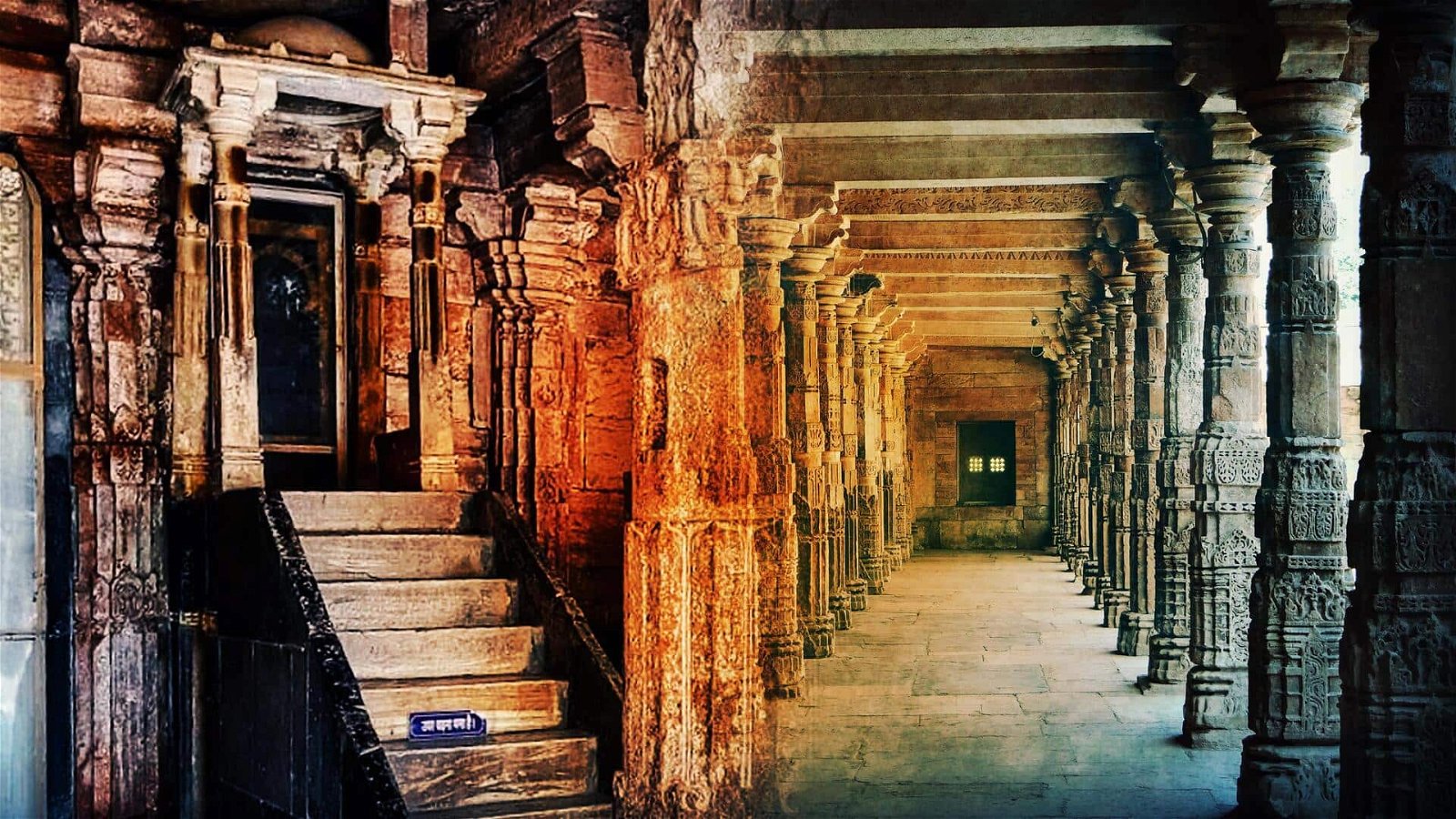
About King Bhoja
|
{GS2 – MoCF – Initiatives} Credit Assistance Program for Jan Aushadhi Kendras
- Context (PIB): The Union Minister for Chemicals & Fertilizers and Health & Family Welfare inaugurated a credit assistance program for Jan Aushadhi Kendras.
- In this regard, an MoU was exchanged between Small Industries Development Bank of India (SIDBI) and Pharmaceuticals and Medical Devices Bureau of India (PMBI).
- The program takes advantage of both GST-Sahay technology platform and the Digital Public Infrastructure (DPI) of India to provide unsecure working capital loan for small businesses.
- It also adds a third layer, i.e. ‘credit layer’ to make credit flow to crores of small businesses who are not able to secure loans from banks and then get exploited by moneylenders.
- Objective: To strengthen and modernise Jan Aushadhi Kendras’ network across the country.
- Initiatives include robust procurement processes, expanding the product basket, maintaining regular supply chains, and ensuring stringent quality checks.
Pradhan Mantri Bhartiya Janaushadhi Pariyojana (PMBJP)
|
{GS2 – MoCF – Initiatives} Uniform Code for Pharmaceutical Marketing Practices 2024
- Context (TH | BS | TP): The Department of Pharmaceuticals recently introduced the Uniform Code for Pharmaceutical Marketing Practices (UCPMP) 2024.
Key Guidelines for Pharmaceutical Industry
- Pharmaceutical companies should prohibit Gifts and Travel Perks for healthcare professionals (HCP) or their family members (both immediate and extended).
- Ban on supplying free samples to those who are not qualified to prescribe such a product.
- Prohibition on Offering Pecuniary Advantages or benefits in kind to HCP who are qualified to prescribe or supply drugs.
- This prohibition includes distributors, wholesalers, retailers, and others acting on behalf of pharmaceutical companies.
- Restriction on Travel Facilities including tickets for rail, air, ship, cruises, & paid vacations, should not be extended to HCP or their family members for attending conferences, seminars, etc.
- Formation of Ethics Committee: All associations are urged to form an Ethics Committee for Pharmaceutical Marketing Practices (ECPMP).
- Prohibition on Premature Drug Promotion i.e. before receiving marketing approval from the competent authority.
- Requirement for Accurate Drug Information: Drug information must be accurate, balanced, and up to date, avoiding any misleading statements. Substantiation must be promptly available upon request from medical and pharmacy professionals.
- Guidelines for Drug Claims: Drug claims should be supported by current evidence, avoiding absolute statements of safety. For example, it must not be stated categorically that a medicine has no side effects, toxic hazards, or risk of addiction.
- Also, the term “new” should not be used to describe any drugs or interventions available or promoted in India for over a year.
|
- Regulating the Pharmaceutical Industry in Continuing Medical Education (CME): The Pharmaceutical industry’s engagement with HCP for CME must adhere to a clear set of guidelines.
- According to the uniform code, conducting such events in foreign locations is not allowed.
- Standards for Medical Representatives: Must always maintain a high standard of ethical conduct in the discharge of their duties.
- They must not use inducements or tricks to secure interviews with HCP and are prohibited from paying for access to HCP under any circumstances.
{GS2 – Social Sector – Health – Issues} AMR report on Indian Livestock & Fish
- Context (DTE): FAO publishes first national report on AMR surveillance in India’s fisheries, livestock sectors for 2019-22.
- Antibiotic use in food animal production is known to be a driver for Anti-Microbial Resistance(AMR).
Key findings
- The report found low resistance levels to less commonly used antibiotics like chloramphenicol in fisheries and animal sectors.
- It noted significant resistance to macrolides (class of antibiotics) such as erythromycin and quinolones like ciprofloxacin.
- Resistance to third and fourth generation cephalosporins (class of antibiotics) like cefotaxime and cefpodoxime was also documented.
- The findings indicate the importance of careful antibiotic use in aquaculture and livestock production systems.
Indian Network for Fishery and Animal Antimicrobial Resistance (INFAAR)
- It is a network of laboratories formed under ICAR.
- INFAAR focuses on AMR surveillance in fisheries and livestock sectors.
- Its Technical assistance is provided by FAO and USAID.
{GS3 – Envi – Degradation} Nuclear Waste Management
- Context (TH): The widespread adoption of nuclear power in India presents a challenging issue of waste management.
How nuclear waste are produced?
By products
- In a fission reactor, neutrons collide with the nuclei of specific atoms.
- When a nucleus absorbs a neutron, it becomes unstable and splits, releasing energy and forming nuclei of other elements.
- For instance, uranium-235 can split into barium-144, krypton-89, and three neutrons when it absorbs a neutron.
- If the resulting elements cannot undergo further fission, they become nuclear waste.
Spent fuel
- Nuclear waste also includes the spent fuel which is extremely radioactive and requires secure storage to prevent environmental contamination.
- Fuel used in a nuclear reactor becomes irradiated and is known as spent fuel when removed.
How nuclear waste is managed?
Spent fuel
- It is challenging to handle due to its high temperature and radioactivity, often requiring underwater storage for several decades.
- Once cooled, spent fuel can be transferred to dry casks for long-term storage.
- Storage periods for spent fuel can extend for millennia, requiring isolation from human contact.
- Countries with established nuclear power programs have accumulated significant amounts of spent fuel.
Liquid waste
- Liquid waste treatment facilities in nuclear power plants manage aqueous wastes containing short-lived radionuclides.
- Japan, for example, treats and discharges such water from the Fukushima nuclear plant into the Pacific Ocean.
- Other liquid wastes can be evaporated, chemically precipitated into sludge, absorbed on solid matrices, or incinerated depending on their hazard.
- Liquid high-level waste, containing most fission products, is vitrified into glass for storage.
- In India, fission products from pressurized heavy-water reactors must be stored as liquid waste due to reprocessing, posing accident hazards.
|
Different methods to manage nuclear waste?
Dry-Cask Storage Proces
- After spending at least, a year in a spent-fuel pool, cooled spent fuel can be moved to dry-cask storage.
- In dry-cask storage, spent fuel is placed inside large steel cylinders and surrounded by inert gas before being sealed shut and placed in larger steel or concrete chambers.
Geological disposal
- Some experts advocate for geological disposal, where waste is sealed in special containers and buried underground in granite or clay.
- Geological disposal offers long-term storage away from human activity, but there are concerns about potential exposure if containers are disturbed.
- The emplacement of waste can affect the properties of surrounding rock, creating increased fracture zones and thermal pulses.
Reprocessing
- It is a method to separate fissile from non-fissile material in spent fuel.
- The material is chemically treated to separate fissile material left behind from the non-fissile material.
- Reprocessing facilities require specialized protection and personnel due to the hazardous nature of spent fuel.
- Reprocessing offers higher fuel efficiency but is expensive and yields weapons-usable plutonium (different from weapons-grade).
- The IAEA regulates reprocessing facilities tightly, specifying thresholds for plutonium content to ensure safeguards.
|
{GS3 – S&T – Defence} India’s Arms Import
- Context (TOI | TH | TP): As per Stockholm International Peace Research Institute (SIPRI), India ranked as the world’s leading arms importer from 2019 to 2023.
- During this period, imports rose by 4.7% compared to 2014-18, as per the Stockholm International Peace Research Institute (SIPRI).
- Russia remained India’s primary arms supplier, accounting for 36% of its arms imports.
- However, this marked the first five-year period since 1960–64, when Russian deliveries comprised less than half of India’s arms imports.
Top importers
- The top three importers were India, Saudi Arabia, and Qatar.
- Ukraine emerged as the fourth largest arms importer globally.
- Pakistan is the fifth largest arms importer. China supplied 82% of all arms imported by Pakistan during this period.
- 9 out of the top 10 arms importers in 2019–23 was in Asia, Oceania, or the Middle East.
Trends among Top Exporting countries
- The United States, the world’s largest arms supplier, experienced a 17% increase in exports from 2014–18 to 2019–23.
- In contrast, Russia’s arms exports dropped by over half, specifically by -53%.
- France emerged as the world’s second largest arms supplier, with exports growing by 47% during this period.
- The increase in French arms exports was largely due to combat aircraft deliveries to India, Qatar, and Egypt.
- Five of the top 10 arms exporters, China, Germany, the U.K., Spain, and Israel, experienced decreases between the two five-year periods.
- Europe contributes around one-third of global arms exports.
{GS3 – S&T – Defence} Tejas Aircraft
- Context (IE): The Tejas aircraft has encountered a crash for the first time in 23 years.
- The Tejas aircraft, officially known as the HAL Tejas, is an Indian single-engine, delta-wing, light multirole fighter.
- The Tejas was designed by the Aeronautical Development Agency (ADA) in collaboration with the Aircraft Research and Design Centre (ARDC) of Hindustan Aeronautics Limited (HAL).
- It emerged from the Light Combat Aircraft (LCA) program, initiated in the 1980s to replace India’s ageing fleet of MiG-21 fighters and contribute to overall fleet modernisation.
- In 2003, the Light Combat Aircraft program was named as ‘Tejas’ (which translates to ‘radiance’ in Sanskrit) by the then PM Atal Bihari Vajpayee.
- The Tejas is the second fighter developed by HAL with the goal of achieving supersonic performance, following the HAL HF-24 Marut.
- The Tejas achieved initial operational clearance in 2011 and final operational clearance in 2019.
- The first Tejas squadron, No. 45 Squadron IAF Flying Daggers, became operational in 2016, replacing their MiG-21s with the Tejas.
- Currently, there are 3 production models of the Tejas: the Mark 1, Mark 1A, and a trainer version.
Features
- The Tejas is the smallest and lightest in its class of contemporary supersonic combat aircraft.
- It is designed to carry a range of air-to-air, air-to-surface, precision-guided weapons.
- Its maximum payload capacity is 4000 kg.
- It can reach a maximum speed of 2,220 km/h (1,380 mph) or approximately Mach 1.812.
- It covers a combat range of 739 km (459 mi) with internal tanks.
- For longer distances, it can fly up to 3,000 km (1,864.1 mi) with external drop tanks.
- The Tejas can climb to an impressive altitude of 15,240 meters (50,000 ft).
{GS3 – S&T – Tech} FutureLABS Center
- Context (PIB): The Union Minister inaugurated India’s first FutureLABS centre at C-DAC (Centre for Development of Advanced Computing) Thiruvananthapuram.
- Named “Centre for Semiconductor Chips & Systems for Strategic Electronics“, the centre will catalyse an ecosystem for next-gen chip design, manufacturing, and research.
- Vision: To emphasise the partnership between government, industry, students, startups, and academia.
Other Initiatives
- Collaboration between C-DAC (T) and the Ministry of Railways for electric locomotive technologies.
- MoU signed between C-DAC (T) and Tata Power for microgrid technologies.
- Technology transfer of electric vehicle wireless charger from C-DAC(T) and VNIT Nagpur to BelRise Industries Limited.
{Prelims – In News} Chushi Gangdruk
- Context (IE): The Chushi Gangdruk was a Tibetan guerrilla group formally organized in 1958,.

- The Chushi Gangdruk guerrilla fighters fought the forces of the People’s Republic of China in Tibet from 1958 to 1974.
- “Chushi Gangdruk” is a Tibetan phrase meaning “land of four rivers and six ranges,”.
- From the 1940s to the 1960s, they rose up in arms against the occupying Chinese forces, depending first on the American CIA and then on the Indian government.
- Their most remarkable feat was ensuring His Holiness the Dalai Lama’s secret escape from the Norbulingka palace in Lhasa to India in 1959.
- After 1962 chinese aggression, Nehru considered the potential of a ready cache of Tibetan soldiers.
- India’s Special Frontier Force was born, which would also include Tibetan Chushi Gangdruk rebels as part of its sub-unit, called Establishment-22.
- They, too, would be trained by the CIA, officially, at the Indian army’s Agra air base.
- From 1960, Chushi Gangdruk conducted its guerrilla operations from the northern Nepalese region of Mustang.
- In 1974, guerrilla operations ceased given the realignment of Sino-American relations initiated by President Richard Nixon.
{Prelims – In News} IREDA Celebrates 38th Foundation Day
- Context (PIB): Indian Renewable Energy Development Agency Ltd. (IREDA) celebrated its 38th Foundation Day.
- IREDA is a Public Limited Government Company formed in 1987.
- It has been notified as a “Public Financial Institution” under section 4 ‘A’ of the Companies Act, 1956 and registered as Non-Banking Financial Institution with Reserve Bank of India.
- IREDA is a Mini Ratna (Category – I) organisation owned by the Government of India and administratively controlled by the Ministry of New and Renewable Energy (MNRE).
- It is formed to promote, develop, and extend financial assistance for setting up projects related to new and renewable sources of energy and energy efficiency/conservation.
- Motto: Energy for Ever.
- Objectives:
- Drive towards total customer satisfaction.
- Continual upgradation of capability and improvement in the professional skills of employees.
- Improvement in efficiency of services provided to customers.
- Continual improvement of systems, process and services.





![PMF IAS Environment for UPSC 2022-23 [paperback] PMF IAS [Nov 30, 2021]…](https://pmfias.b-cdn.net/wp-content/uploads/2024/04/pmfiasenvironmentforupsc2022-23paperbackpmfiasnov302021.jpg)

